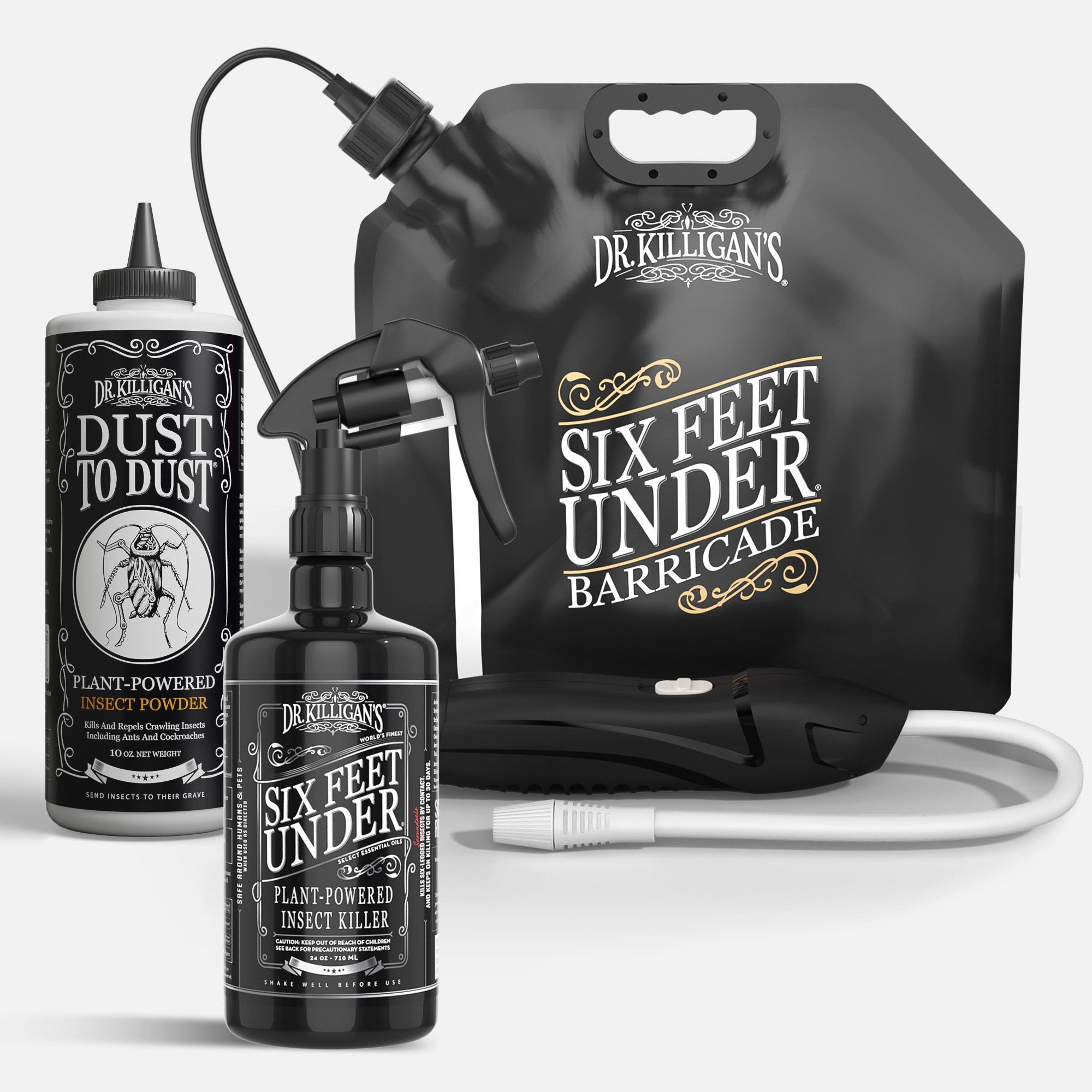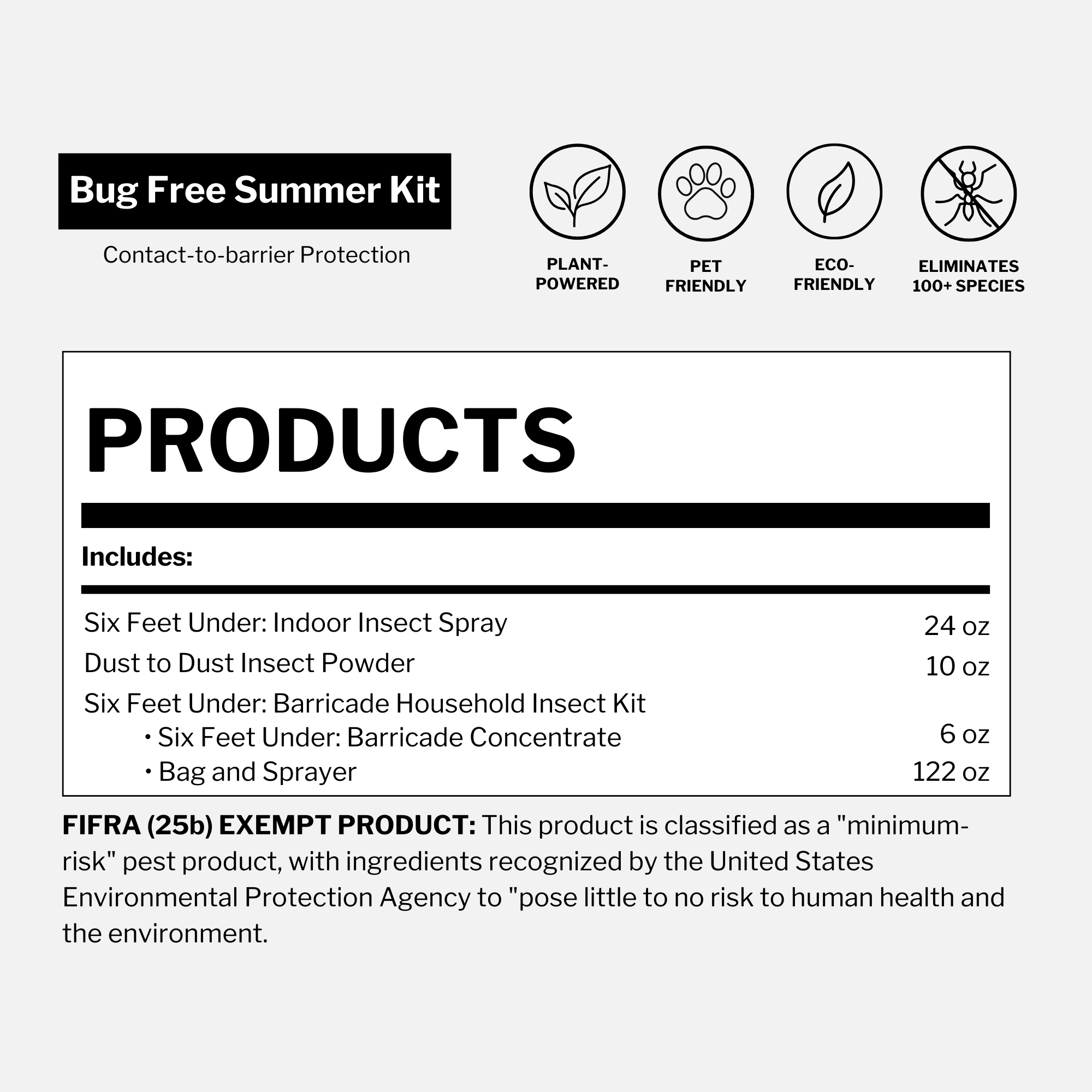Updated on October 3rd, 2024
Today I want to empower you with knowledge that can transform how you view and choose pest control products.
Navigating pesticide labels can be daunting, but understanding their terms is crucial for your safety and the environment. Let’s cut through the confusion together.
Understanding pesticide labels: A critical overview
When you pick up a pesticide, the label might seem like a straightforward guide to using the product safely and effectively. However, the reality is often more complex. Here are three crucial aspects to be aware of when understanding a pesticide label:

1. Marketing vs reality:
The words "natural" and "safe" on pesticide labels might catch your eye, but what do they really mean? These terms aren’t always backed by strict regulations. Companies often use them as a selling point, targeting health-conscious buyers. However, just because something is labeled "natural" doesn't mean it's free from risks, and "safe" doesn’t always guarantee zero risk.
What to look out for:
-
"Natural" doesn’t necessarily mean risk-free: Certain natural ingredients can still pose risks to human health or the environment, depending on their concentration or formulation. For instance, pyrethrin—derived from chrysanthemum flowers—is a common "natural" insecticide; however, it can cause allergic reactions in some individuals and should be used with
caution when spraying near creeks and rivers as it can be toxic to aquatic life. Be sure to investigate each ingredient, especially those labeled 'natural,' to understand their potential risks. Look beyond marketing buzzwords to make informed decisions.
- The problem with "safe": Just because a product is labeled "safe" doesn’t mean it’s free from risk, especially if you have children, pets or sensitive individuals in your household. The term "safe" can be misleading without a clear understanding of how the product interacts with the environment or the body. Trust your judgment, do your homework and always look beyond the label.
Why this matters: Terms like "natural" and "safe" can be misleading. Understanding the actual risks helps you choose products that truly protect your family, pets and the environment.
2. Inert vs. active ingredients
When reading a pesticide label, most people focus on the active ingredients—the chemicals that directly target pests. However, inert ingredients—the substances that improve delivery or stability—can have significant, often overlooked impacts.
What to watch for:

- Inert doesn’t mean inactive: Inert ingredients might not target pests directly, but that doesn’t make them harmless. For example, PFAS chemicals, sometimes used as inert ingredients, are associated with toxic effects and persistent environmental damage. According to recent investigations, several pesticide manufacturers are still selling PFAS-contaminated products, raising serious concerns.
- Hidden dangers due to lack of disclosure: Federal law doesn’t require manufacturers to list inert ingredients on pesticide labels. This lack of transparency leaves consumers in the dark about the potential hazards. Research has shown that many pesticide formulations are more toxic due to their inert components than the active ingredients alone. These substances can amplify harmful effects on the nervous and cardiovascular systems and even cause genetic damage.
Why this matters: Without full disclosure, consumers can’t accurately assess safety, especially since inert ingredients may increase the toxicity of active ones. This lack of transparency can lead to unintentional exposure to harmful substances.
Understanding these nuances is critical to making informed decisions about the products you bring into your home. It's not just about what’s on the label—it’s about what might be hidden behind it.
3. Chemical names and their impacts
Pesticide labels often list complex chemical names that might not be familiar to the average consumer. It’s important to research these ingredients individually. For example, organophosphates—widely used in pest control—disrupt the nervous systems of pests but can also affect humans by inhibiting certain enzymes (cholinesterase) critical for nerve function, leading to neurological symptoms when misused.
As previously discussed, pyrethroids are synthetic versions of the natural pyrethrins found in chrysanthemum flowers. Although these are generally considered safer for humans, some studies have found that pyrethroids can be toxic to aquatic life and may lead to nervous system disruptions in mammals at high exposure levels. For instance, permethrin is highly toxic to cats, making its presence in household products a concern for pet owners.
Other ingredients like neonicotinoids—often listed in pesticides—are linked to bee population decline and can have long-lasting effects on pollinators.
Why this matters: Understanding pesticide ingredients helps you make safer choices, especially if you have vulnerable family members like children or pets. Being aware of potential risks empowers you to avoid harmful substances or use them with greater caution.
How to read and understand labels correctly
Navigating a pesticide label goes beyond a cursory glance at the front display. Here are some key points to watch out for:

-
Look beyond the front label: Don’t be swayed by marketing phrases like “safe” or “eco-friendly” that are prominently displayed to attract your attention. These terms might catch your eye but often do not reflect the true nature of the product.
-
Read the fine print: Always turn the product around and take time to read the smaller text. This section, including the list of active and sometimes inert ingredients, reveals the actual substances you will be handling.
-
Understand the precautionary statements: This critical part of the label includes proper handling guidelines, potential hazards and first aid instructions. A product labeled as harmless yet featuring extensive warnings should be a major red flag.
-
Check the environmental hazards: This section of the label is vital for understanding the product’s ecological impact. It outlines any potential harm to wildlife, water bodies and other environmental components. To dig deeper, look for specific warnings about toxicity to aquatic life, birds or pollinators like bees. Additionally, you can research the active and inert ingredients through government databases like the EPA’s Pesticide Product and Label System or the National Pesticide Information Center. Be on the lookout for signal words such as "Toxic to Fish" or "Harmful to Bees."
-
Identify the signal words: Words like ‘DANGER’, ‘WARNING’ or ‘CAUTION’ provide immediate insight into a product’s toxicity level. These signal words help gauge the necessary precautions due to their indication of acute toxicity.
- Consult the user manual: In addition to the label, many products include a detailed user manual that offers comprehensive usage instructions and safety guidelines. Consult this manual for thorough understanding and safe application.
How Dr. Killigan’s stands apart in pesticide safety and transparency

At Dr. Killigan's, transparency and safety are our priorities. While many conventional pesticides require signal words like 'DANGER' due to hazardous content, our products avoid harmful ingredients—like PFAS—and meet EPA standards for minimal-risk pesticides. We fully disclose all ingredients to ensure you make informed, safe choices for your family.
Our products are exempt from registration under the Federal Insecticide, Fungicide, and Rodenticide Act (FIFRA), a federal law that regulates pesticide distribution and use. This exemption reflects the fact that our ingredients—both active and inert—meet the criteria for minimal risk.
We go beyond merely meeting regulatory requirements. Each ingredient in our formulations undergoes rigorous vetting to ensure its safety and efficacy. Our active ingredients, chosen from an EPA-approved list under 40 CFR 152.25(f)(1), are selected for their low-risk profile. Similarly, our inert ingredients are also classified as minimum-risk.
By eliminating unnecessary risks and ensuring full compliance with EPA guidelines, Dr. Killigan’s offers pest control that you can trust—safe for your family, pets and the planet.
Empowering you through full disclosure
We believe you have the right to know exactly what’s in the products you use in and around your homes. That’s why we disclose all ingredients and provide detailed information on their effects and safe use. Note: Some of our products—Clothing Moth Traps, Pantry Moth Traps, the Insect Buster, and The Fly Inn—contain no active ingredients, focusing on mechanical or physical methods to control pests.

Dust to Dust Plant-Powered Insect Powder:
- Peppermint oil: Non-toxic insect control: The benefits of peppermint oil
- Rosemary oil: The benefits of rosemary oil and how to use it
- Silica: Dust to Dust unveils the silica secret every plant craves
- Stearic acid: The role of stearic acid in pest control
Six Feet Under Plant-Powered insect Spray:
- Soybean oil: The benefits of soybean oil
- Plant-based sodium lauryl sulfate: Plant-based vs petroleum-based SLS: A Dr. Killigan’s perspective on safer choices
- Cinnamon oil: The many benefits of cinnamon and how to use it
- Clove oil: The benefits of clove oil
Cedar Planks Clothes Moth Repellent:
- Eastern red cedar: The insect repelling power of eastern red cedar
Sweet Surrender Fruit Fly Trap:
- Plant-based sodium lauryl sulfate: Plant-based vs petroleum-based SLS: A Dr. Killigan’s perspective on safer choices
- Vinegar: Vinegar vs fruit flies: Unveiling the truth with Dr. Killigan’s expertise
We also emphasize education. By understanding what each component does and the potential risks it may carry, you can make informed choices that align with your values and health standards.
The bottom line

Understanding pesticide labels doesn’t have to be overwhelming. At Dr. Killigan’s, we’re committed to clear, transparent labeling, so you can choose safe, effective products for your home and loved ones. Stay informed, choose responsibly and let us help you protect your home without compromising on safety.
Thank you for choosing Dr. Killigan’s. Join our community by subscribing to our newsletter, and follow us on social media for more tips on how to live pest-free, naturally and responsibly.





















